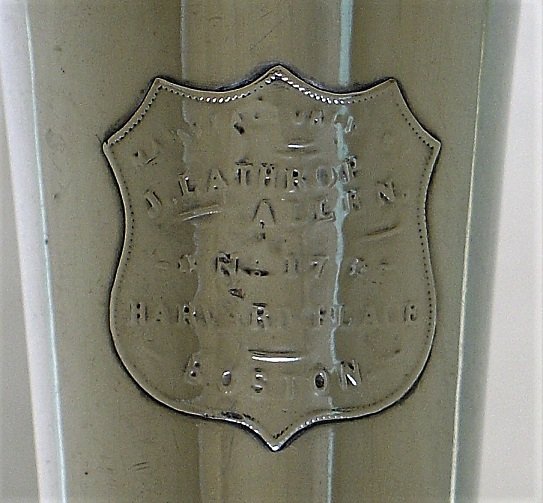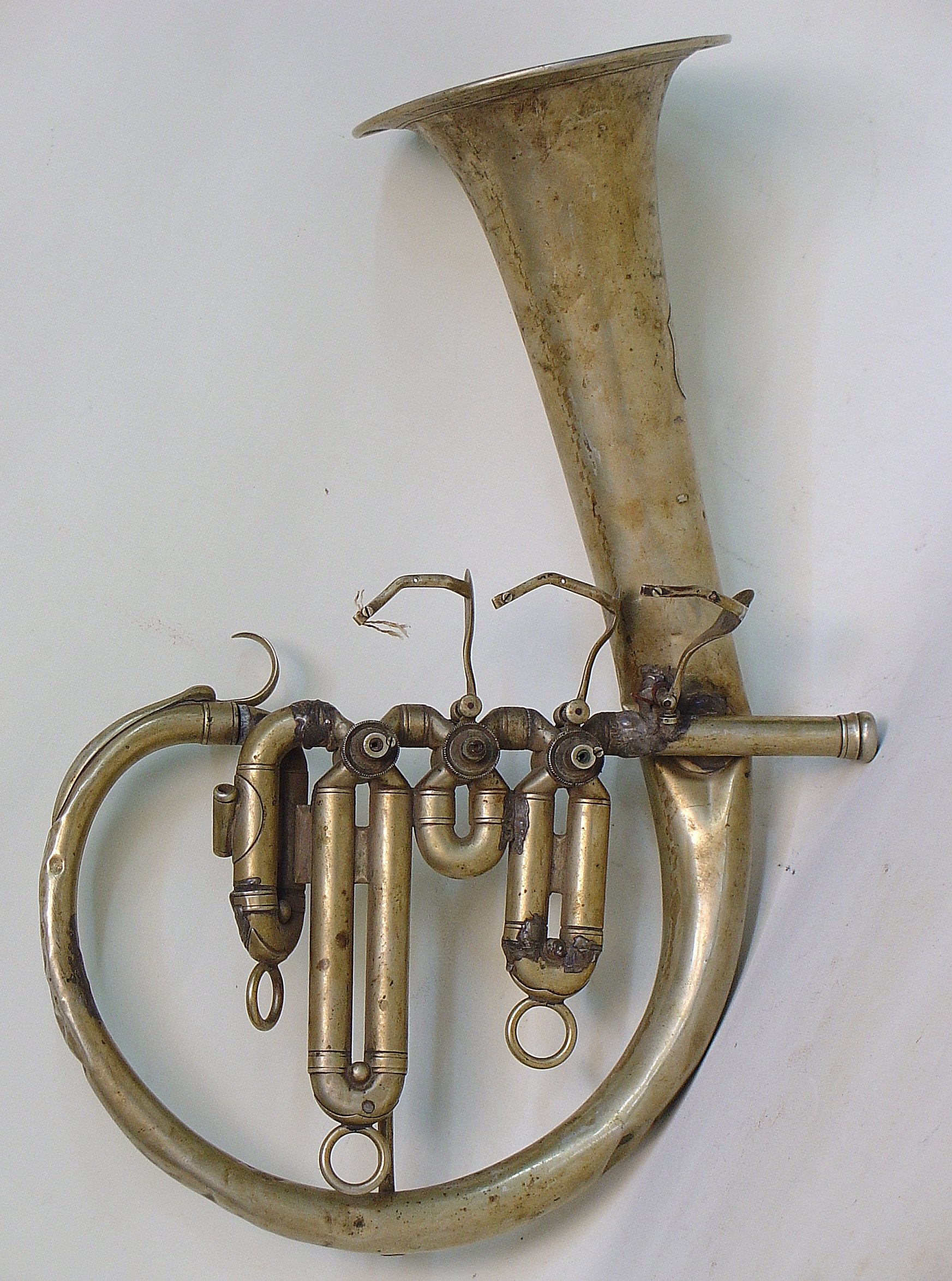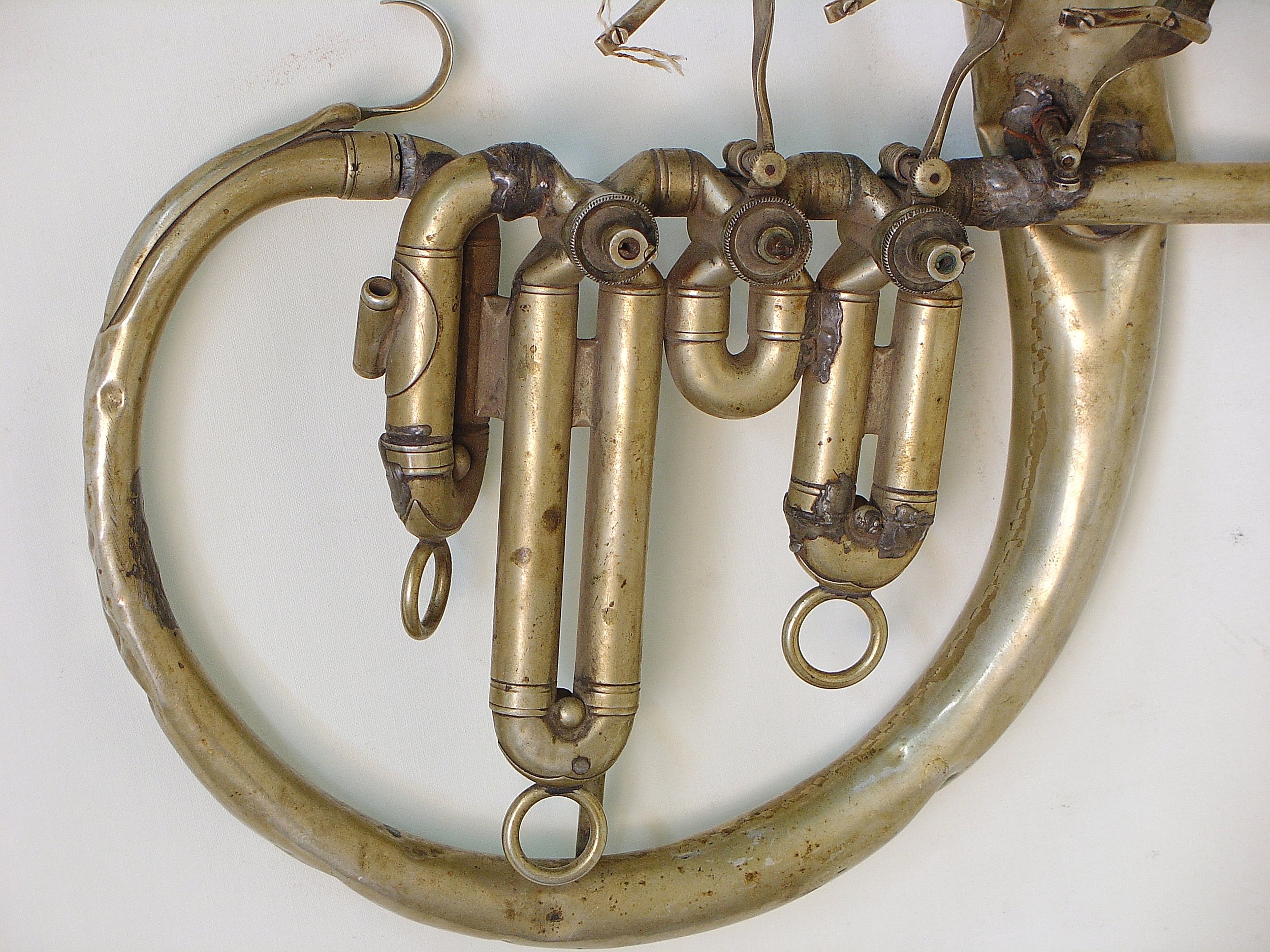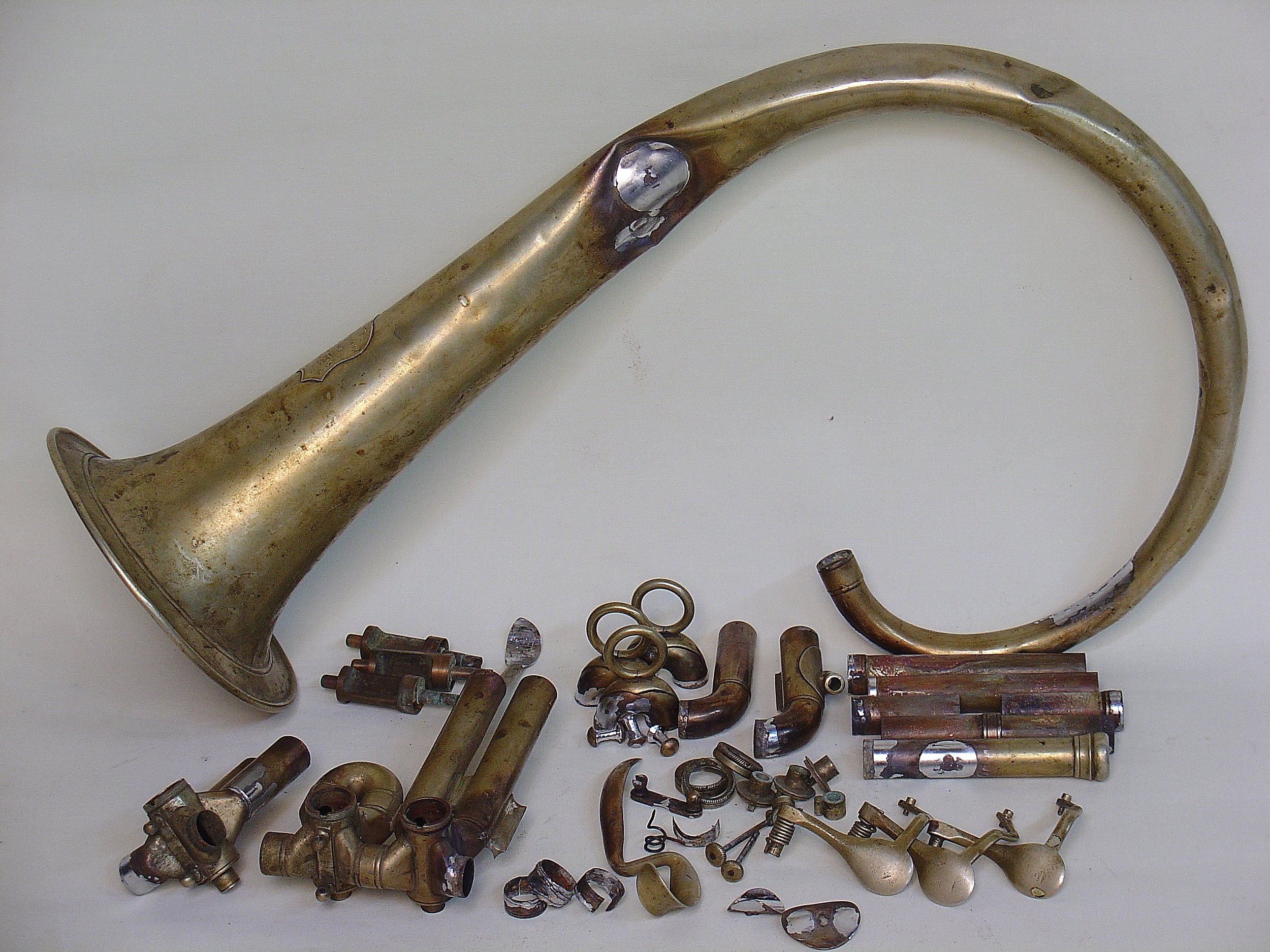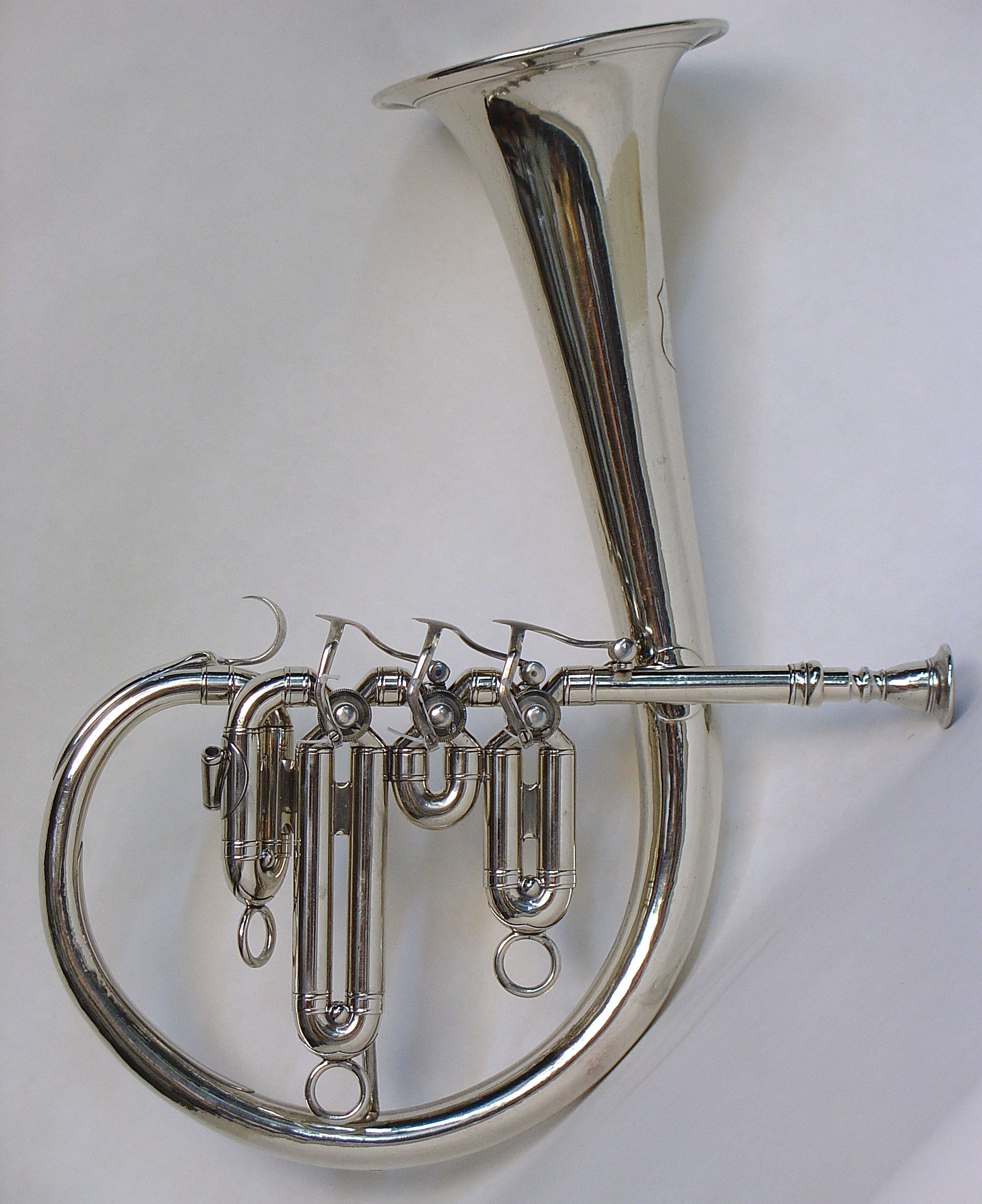Early Allen Eb Soprano
This is another very important historical instrument from Mark Elrod's great collection. In the photos taken before restoration, it looks pretty rough, with many dents and scary looking repair attempts. Dent removal took the bulk of the time involved, but this instrument is remarkably complete. The only parts needing to be fabricated were the three stop arm retaining screws and three ferrules. The most difficult task was removing dents in the area where the bell seam had split, where you can see a large lump of solder. Once that was straightened and patched, the rest went together somewhat easily. The seam didn't separate the whole length of the patch that I installed, but rather I made it long enough to cover the seam where it had deteriorated to the extent that air leaked through the joint.
The shield affixed to the bell indicates that Joseph Lathrop Allen made this instrument while his shop was at Number 17 Harvard Place. This was his address only for the years 1853 to 1856, making this one of the earliest instruments by this maker extant. Harvard Place is a tiny alley that still exists today, although with more modern buildings, and was never wide enough for automobile traffic. A cluster of five story buildings at the end of Harvard Place had steam power that supported a variety of machine and woodworking shops. Allen had previously occupied Number 19 Harvard Place and moved to Number 18 in 1857. Other makers that had occupied these shops between 1851 and 1866 included Graves & Co., E.G. Wright, B.F. Richardson and Gilmore & Co.
This design was continued to be made by successive owners of this business: Allen & Hall, D.C. Hall and Hall & Quinby at least until the late 1870s. The woodcut, bottom right is from Hall's 1864 catlog. The bore measurement is .438" and later examples seem to be a bit smaller at .432". The mouthpiece pictured is not original to this instrument, but looks somewhat similar to what would have been supplied when new. After restoration, this is very playable and is especially sweet in the high register, which, after all, is what it is intended to play.

